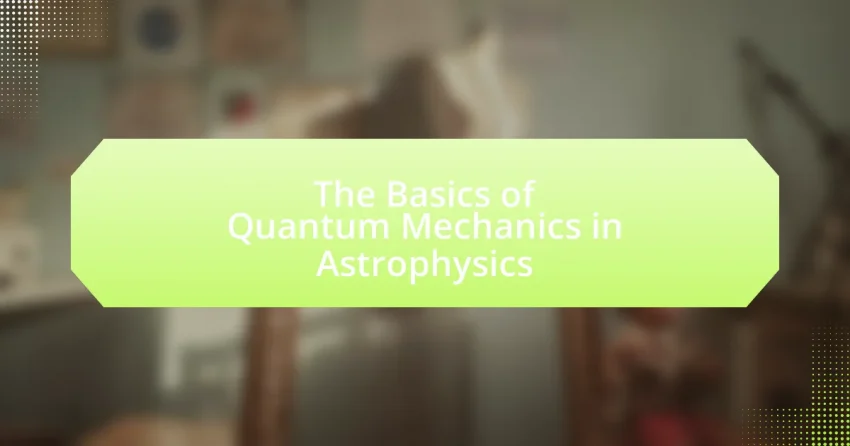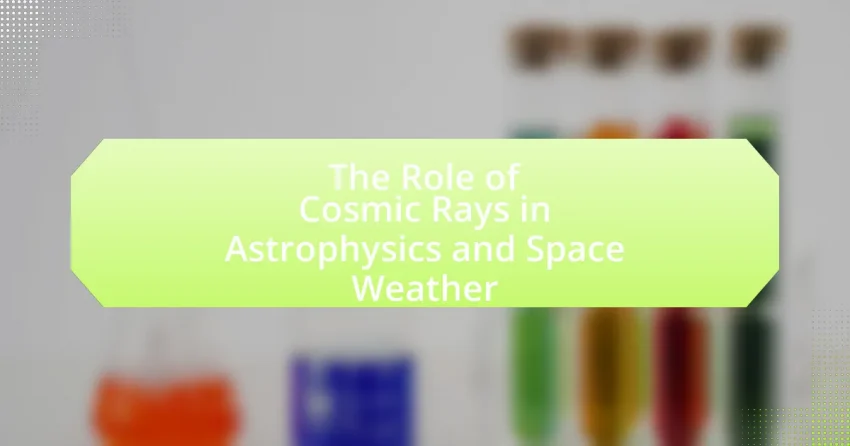The formation of galaxies is a complex process involving the gravitational collapse of gas clouds, leading to the creation of stars and structured astronomical entities. This article explores the stages of galaxy formation, including the role of cosmic dust, gravity, and molecular clouds, as well as the different types of galaxies such as spiral, elliptical,…
The Basics of Quantum Mechanics in Astrophysics
Quantum mechanics in astrophysics is a critical field that applies the principles of quantum mechanics to understand cosmic phenomena at atomic and subatomic levels. This article explores the relationship between quantum mechanics and astrophysics, detailing fundamental concepts such as wave-particle duality, quantum entanglement, and the uncertainty principle, and their implications for stellar formation, black holes,…
The Big Bang Theory: Evidence and Implications
The Big Bang Theory is the predominant scientific explanation for the origin of the universe, positing that it began approximately 13.8 billion years ago from a hot, dense singularity. Key evidence supporting this theory includes the observed redshift of distant galaxies, indicating an expanding universe, and the cosmic microwave background radiation, which serves as a…
An Introduction to Exoplanets: Methods of Detection
Exoplanets are planets located outside our solar system, orbiting stars other than the Sun. This article provides a comprehensive overview of exoplanets, including their definitions, characteristics, and the various methods used for their detection, such as the transit method and radial velocity method. It also explores the significance of studying exoplanets for understanding planetary systems…
The Importance of Spectroscopy in Astronomy
Spectroscopy is the study of the interaction between light and matter, playing a crucial role in astronomy by enabling the analysis of celestial objects’ composition, temperature, density, and motion. This article explores the significance of spectroscopy in understanding stars, galaxies, and exoplanets, detailing various types of spectroscopy, including optical, infrared, and radio spectroscopy, and their…
Analyzing the Habitability of Exoplanets: Key Factors
The article focuses on analyzing the habitability of exoplanets, emphasizing key factors such as the presence of liquid water, distance from the host star, atmospheric composition, and geological activity. It defines habitability in terms of conditions that can support life, primarily based on the existence of liquid water and a stable atmosphere. The article discusses…
The Role of Cosmic Rays in Astrophysics and Space Weather
Cosmic rays are high-energy particles from outer space, primarily composed of protons, atomic nuclei, and electrons, playing a crucial role in astrophysics and space weather. This article explores their origins, classification, and significance, highlighting how cosmic rays provide insights into cosmic phenomena such as supernovae and black holes. It also examines their impact on space…
The Life Cycle of Stars: From Nebula to Black Hole
The life cycle of stars encompasses several distinct stages, beginning with the formation of a protostar from a nebula and progressing through the main sequence, red giant or supergiant phases, and ultimately leading to their end states as white dwarfs, neutron stars, or black holes. Stars form through gravitational collapse in molecular clouds, where regions…
The Formation of Galaxies: A Journey Through Time
The formation of galaxies is a complex process involving the coalescence of stars, gas, dust, and dark matter through gravitational attraction over billions of years. This article explores the mechanisms of galaxy formation, including hierarchical structure formation, the role of dark matter, and the initial conditions necessary for galaxy development. It discusses the stages of…
The Structure of the Universe: Clusters, Superclusters, and Voids
The article focuses on the structure of the universe, detailing the hierarchical organization of galaxies, galaxy clusters, superclusters, and cosmic voids. It explains how clusters are defined as large groups of galaxies bound by gravity, while superclusters represent larger formations encompassing multiple clusters. The article also discusses the characteristics and formation processes of these structures,…









